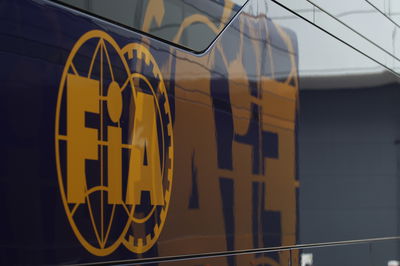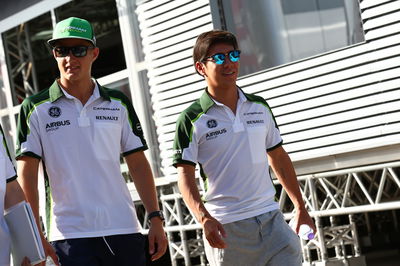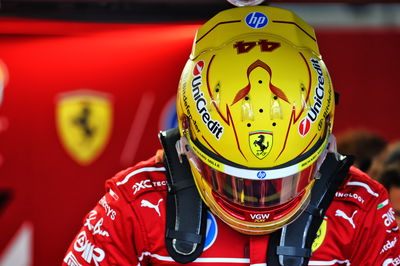My race weekend: Head of IT strategy

- Joined the FIA in 2002
- First race: 2003 British Grand Prix
The systems
We've got real-time telemetry coming in to an FIA database system, and that software links to our marshaling system, so in Race Control, the stewards' room, and for our software engineers so they can compare real-time telemetry with video, audio, and the track map.
The incident system actually tracks the cars and will detect an incident - if a car has stopped, it will flag it automatically. It will send out an audible alert which comes on in Race Control and the stewards' room to signify a Yellow sector. All of our systems are inter-linked: the weather service talks to the team client to send weather data, for example.
We bring together a number of systems, using data from the FOM timing loops, on-car GPS systems, plus two forms of radio communication. We have data coming back in lots of different ways: we can see real-time diagnostics of the steering wheels and dashboards of the cars. We give the teams raw data which they can then put in their systems to display on their screens.
Our systems are in constant development. They change each year, but can also change between races, depending on what's going on. Once we start on Friday, we don't like to change too many bits of software. A change has to be pretty critical, or you risk introducing more potential problems.
The document system is pretty self-sufficient, although it is just as critical as the other systems - without it, we can't produce the official documents. When documents come through on the documents system - such as a technical report from Jo [Bauer, FIA technical delegate] - I have to forward this to all the teams once it is checked/shown to the stewards. Forwarded documents or those from the Race Director or are created for the Stewards go via the system and are available to the teams within seconds.
The set-up
A week before we get here, our network team come out and lay all the fibres, then when we arrive they go back to the last circuit and pick it all up. Then they'll move on to the next track and set it up for our arrival, before coming back here when we finish and collecting all the fibres.
For a European race, I arrive at the circuit on Tuesday morning. For a fly-away, we have to be there Monday. I only started travelling seven years ago, because that was when the network started, basically. I've been working for the FIA for 12 years, but before I was directly involved in the F1 side of things, there was no network. We used talk-back panels, and that was it. There was no network, no connectivity; we had multiple internet connections provided by the circuit.
But the introduction of the documents system meant we had to get a network to talk to the teams, and make it internal so we had complete control over the fibre and what the teams were seeing. Straight after that, the number of services took off overnight. It's how we pick up all the telemetry data on all the teams, it's how we send them data.
In session
When the medical and safety cars do their track tests, we and FOM take the opportunity to test all the communications with the cars, all of the panels, everything we run is tested. We run other tests as well - one before the session to make sure everything's okay, especially if something's been changed overnight.
I keep an eye on the marshaling system, which is operated by Colin [Haywood, F1 Race Control operator] in Race Control. The screens show flag positions, turn numbers, sector lines for timing and DRS activation/detection, plus the position of each car, the compounds they're running...
At the start of each session I enable the marshalling system and check our feed connections to FOM and to the servers. One of the other things I have to do is check the CCTV system, ensuring that the cameras are switching correctly when they're being used to follow a car. It uses the FOM loop feed to track the car position, and the video recorded from the CCTV cameras to create a video feed used by Race Control and the Teams.
From my side of things, I have to coordinate looking after the systems and making sure they function. Not all of them, as obviously there are lots, but I act as liaison between the service providers.
Chris Bentley was talking to Kate Walker











